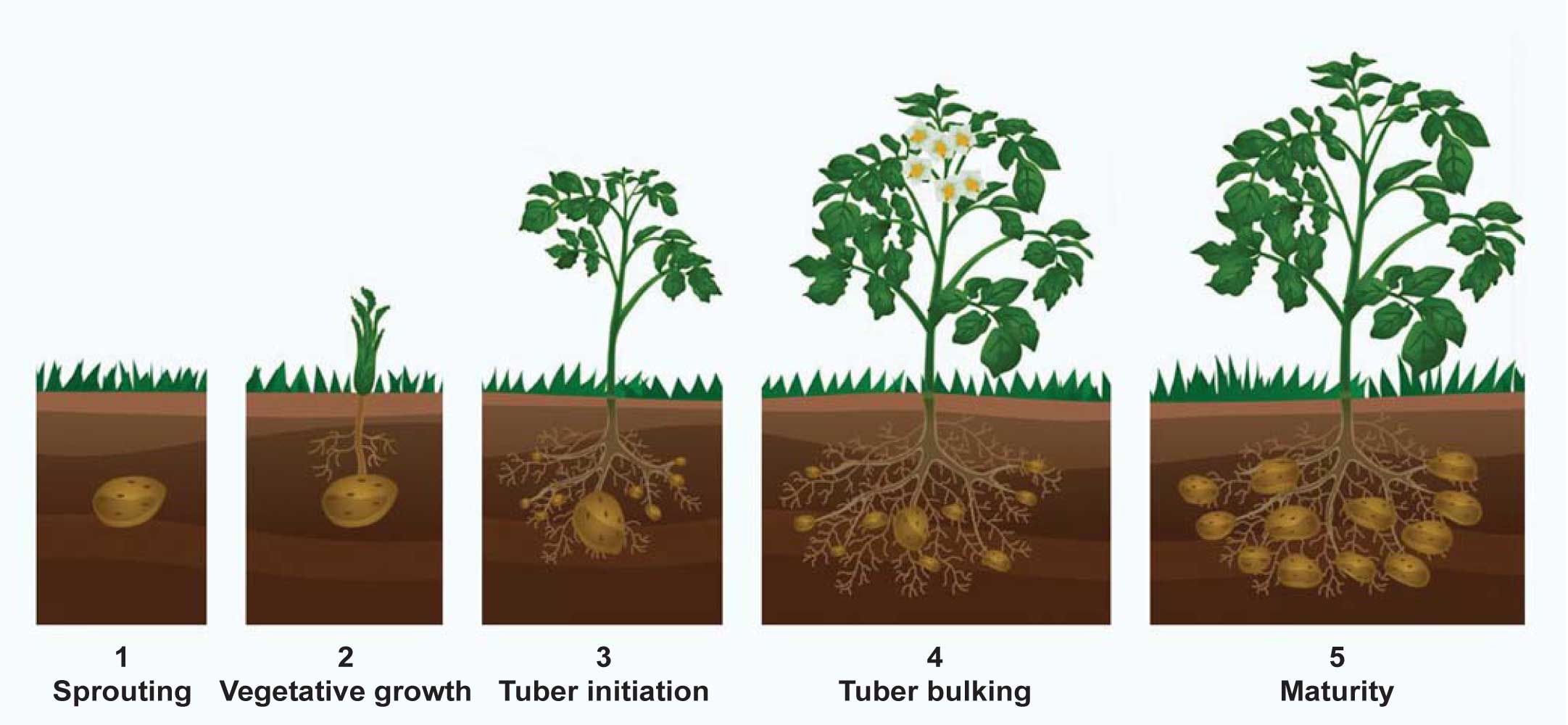March 2023
| LOUISE KUNZ, ASSISTANT EDITOR |
 |
South Africans consume more than 1,8 million tons of potatoes per year and the potato market in South Africa is increasing. According to Potatoes SA, South Africans have eaten twice as many potatoes over the past decade than in the previous one.
Good agricultural management is crucial for successful potato production. As potato production is an intensive process, it is important to have a clear understanding of the crop’s requirements and limitations for optimum and cost-effective production.
The input costs for potatoes are higher than for most crops and it is therefore essential that growers adhere to ‘best practices’ such as testing the soil, planting virus-free material, controlling pests and diseases and applying sufficient fertiliser. Avoid planting in clay soil as potatoes need sandy, close-textured soil in order to grow.
GROWING POTATOES
In the past, potato farming in South Africa was done mainly by smaller farmers. This has changed as a result of increased labour costs, which saw production being mechanised. Today, it is mainly large farming operations that produce potatoes. However, there are still small-scale potato farmers who use simple implements and grow potatoes to sell in their communities.
The best time to plant potatoes depends mainly on the region and conditions. Potatoes prefer cooler growing conditions and a good supply of moisture. They grow best in soils with good drainage.
Land preparation and the seed and cultivar choice are of the utmost importance. Potatoes are generally grown by planting portions of the root structure called seed potatoes or tubers. Seed potatoes aren’t actually seeds – they are tubers that can be used to grow new potatoes. A seed potato is a potato that has grown young sprouting stems called 'eyes'.
Using potatoes from the market for planting is risky and may introduce diseases to the soil. Potato diseases are mainly caused by bacteria and fungi and cause soft, rotten spots on potatoes. The main carrier of bacterial diseases is usually an infected tuber. Having viruses in the tubers will result in a lower yield. The best prevention strategy is to purchase certified, healthy seed potatoes from a reputable supplier. Always grow resistant varieties and certified seed potatoes in tandem with crop rotation.
Grain SA executive member for region 19, Jaco Breytenbach, grows potatoes as part of a five-year crop rotation cycle where maize is planted in year 1, followed by sugar beans or soybeans, then maize again, after which the ground has to lie fallow for a year to store water for potatoes to be planted in year 5. ‘And remember, you cannot plant potatoes in the same field two years running.’
How long do potatoes take to grow?
Different aspects are important at different times in the growth cycle (Figure 1). At tuber initiation, any drought stress will reduce the yield. In the tuber bulking stage, it’s vitally important to keep the leaves healthy and maintain adequate moisture levels.
Young shoots start to appear anytime from one week to three weeks after planting. The total growth period ranges from about 110 to 150 days from planting. Potatoes can be harvested when they are young or mature. Mature, full-size potatoes are known as maincrop potatoes and are often cured and stored for later use. Small, round, immature potatoes are called new potatoes. It is best to harvest your potatoes on a warm, dry day when it has not rained. If you are harvesting new potatoes, they may be ready by day 60.

Potato growth stages.
HIGH INCOME, HIGH RISK
Breytenbach cautions that due to its high fertiliser requirement and the cost of seed potatoes, it is a very expensive crop to grow. ‘If you do not adhere to the best practices, it will cost you dearly. You have to stick to an effective spray programme and good management is key,’ he advises.
Apart from being labour intensive, potato production has other factors which makes it a high-risk crop. Other factors limiting production and profitability are high production costs, pests and diseases, insufficient irrigation, climatic conditions and expensive equipment. ‘Because it is a perishable product which cannot be stored for a long time, you can also lose money if the market is full,’ Jaco explains.
Some of the most common pests that affect potato production are aphids, wireworms and cutworms. The Colorado potato beetle can eat large amounts of potato leaves while growing into bigger pink blobs. If this pest isn’t dealt with, it can destroy a whole potato plant. Crop rotation can prevent these pests, so never plant potatoes in the same field as the year before. Planting potatoes in the same field year after year diminishes the soil health and can cause a build-up of nematodes and diseases.
Breytenbach believes the potato is one of the best crop rotation crops, and says that maize and potatoes make a great ‘team’. Potatoes require high nitrogen rates and the nitrogen input on his farm is about ten times higher for potatoes than for maize, and phosphate and potassium are about four times higher. He explains that because the potato has a weak root system, these nutrients have to be available to ensure a healthy plant. ‘Much of the excess is then available for the maize crop the following season, which leads to a magnificent yield.’
PLANTING POTATOES ON A SMALLER SCALE
Small-scale farmers who plant potatoes for their own use or to sell in their communities can manage harvesting with hand tools such as trowels. Planting done by hand means handling the tubers/sprouts with extreme care. Using spades and shovels can result in chopped-up tubers, so garden forks or hands are recommended.
To make potato production viable for smaller-scale farmers, Breytenbach suggests that harvested potatoes are not washed. ‘Unwashed potatoes last longer and there are informal markets looking for unwashed potatoes. Mozambique vendors buy unwashed potatoes in bulk.’ Farmers can pack their potatoes in plastic or paper bags, and sell it in the informal sector.
Here are some helpful tips for growing potatoes:
SOURCES
https://regenz.co.za/resources/farming-potatoes-in-south-africa/
https://www.adama.com/south-africa/en/potato-farming/potato-farming-in-south-africa
https://www.farmersweekly.co.za/crops/vegetables/planting-and-harvesting-potatoes/
https://www.kzndard.gov.za/images/Documents/researchandtechnologydevelopment/publications/Research_and_Technology_Bulletins/Potato-production-for-Kwazulu-natal.pdf
https://www.potatoes.co.za/
Publication: March 2023
Section: Pula/Imvula